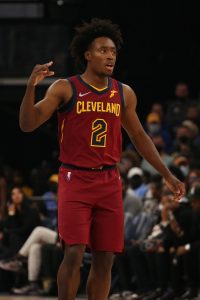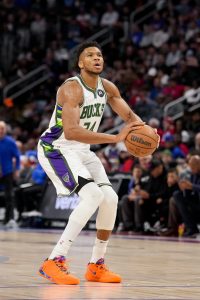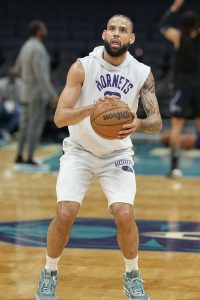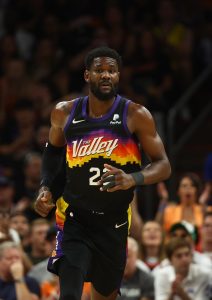Now that LeBron James is officially eligible to sign a contract extension that would keep him with the Lakers through the 2024/25 season, the question we’re positing today is: should he? Does it make sense to his basketball legacy for James to continue with the Lakers’ current personnel, or even a roster without the contract of embattled starting point guard Russell Westbrook?
Team president Rob Pelinka met with James and his agent Rich Paul today for what Paul called a “productive” discussion surrounding a possible extension for the 37-year-old vet. Due to the NBA’s Over-38 rule (outlined in our glossary), the 18-time All-Star is limited to signing, at most, a two-year extension with Los Angeles.
Though James enjoyed a strong individual statistical season during 2021/22, injuries limited the forward to just 56 games, marking the third time in his four seasons with Los Angeles that James has missed 26 or more games. Big man Anthony Davis appeared in just 40 games last year due to his own health problems.
After L.A. traded much of its depth to secure the services of max-salaried point guard Westbrook in the summer of 2021, the Lakers were counting on their new “big three” to win with sheer talent, surrounded mostly by veterans on minimum contracts. The erratic availability of the team’s two best players, plus a disappointing (but mostly healthy) season from Westbrook, doomed the club to an underwhelming 33-49 record. The Lakers did not perform well enough to even qualify for a play-in game. This marked a precipitous fall for the team, which won the title behind stellar performances from James and Davis, surrounded by quality role players, in 2020.
While he is no longer the same defender he was during his Cavaliers and Heat prime, James remains a powerhouse on offense. Beyond his excellent ability to muscle his way inside the paint and an elite passing touch, James has also developed into a decent volume long-range shooter. Last season, he averaged 30.3 PPG, his highest total since 2005/06, plus 8.2 RPG, 6.2 APG, 1.3 SPG, and 1.1 BPG. The 2022 All-NBA Third Teamer posted shooting splits of .524/.359/.756.
The Lakers have pivoted from their 2021 team-building approach. First, L.A. fired its championship-winning head coach Frank Vogel this summer, opting to replace him with former Bucks assistant Darvin Ham. In addition to the team’s three highly-paid stars, Los Angeles is set to bring back wing Talen Horton-Tucker, guard Kendrick Nunn, athletic forwards Stanley Johnson and Wenyen Gabriel, and second-year shooting guard Austin Reaves. Nunn missed the entire 2021/22 season, which would have been his first with the Lakers, due to a knee injury. He claims to be fully recovered at this point.
New Lakers additions like mid-level signing Lonnie Walker IV, centers Damian Jones and Thomas Bryant, and swingmen Troy Brown Jr. and Juan Toscano-Anderson seem to suggest the Los Angeles front office is looking to youth, defense and athleticism over experience and shooting to complement its three stars. The team also drafted rookie guard Max Christie out of Michigan State with the No. 35 pick and signed intriguing undrafted rookies Scotty Pippen Jr. and Cole Swider to two-way contracts.
As for the fate of Westbrook, the Lakers have reportedly received overtures from the Knicks, Jazz, and Pacers. Los Angeles has also had conversations about a potential swap of Westbrook to the Nets for Brooklyn’s own embattled point guard, Kyrie Irving. All of those teams would want at least one and perhaps two future first-round picks to take on Westbrook.
Following a recent split with Westbrook, longtime agent Thad Foucher appeared to indicate that the root of their break-up stemmed from his belief that the point guard should remain with the Lakers, rather than seeking out a trade. Westbrook has since signed Jeff Schwartz to represent him, and one wonders if this new duo will work to relocate Westbrook away from his hometown team this year.
The Lakers would be well-served to offload future assets if they are part of a larger package that will help them also move on from Westbrook. No longer his peak athletic self, the 33-year-old nine-time All-Star proved to be an awkward on-court fit with James as both thrive on the ball and Westbrook, a poor shooter and apathetic cutter, fails to provide much value off it. James and the Lakers could significantly benefit on the floor if the team opted to bring in, say, Pacers veterans Myles Turner and Buddy Hield in exchange for Westbrook and future draft picks.
Even if such a transaction happened, would that – in combination with the club’s new additions and, hopefully, a healthier James and Davis – be enough to effectively move the needle and help Los Angeles return to something approaching title contention, after two straight disappointing seasons? Given the All-Star duo’s time served in the league and injury history, this writer is skeptical.
The West is looking loaded this year, with the reigning champion Warriors poised to hit the ground running, the veteran-laden Nuggets and Clippers finally set to have all their stars healthy, and clubs like the Grizzlies, Suns and Mavericks hoping to continue to build on their recent playoff runs.
James has won four Finals MVP awards and four titles with three different clubs. He has led his teams to 10 Finals appearances all told, including eight straight from 2011-18. There’s no question that, as he enters the twilight of his career, the 6’9″ forward would like to at least have a chance of adding to his championship pedigree and Hall of Fame legacy.
Would James be better served by holding off on agreeing to a Lakers tenure beyond 2023? This way, he could let the team court him in unrestricted free agency instead, where he would be able to simultaneously take stock of what the rest of the league has to offer. At present, only a handful of clubs are expected to have the necessary cap space to sign a player to a maximum contract next summer, though that could certainly change were James to become available.
We want to know what you think. Should James opt to extend sooner rather than later, so that the Lakers could be more inclined to package future draft equity in trades for current help? Should LeBron even opt in at all? Where should he go if he does walk in 2023?
Alternately, if James does return to the Lakers, should he just sign a one-year deal with a player option for the second season, in the hopes of aligning the timing of his free agency with the first season his son Bronny James becomes NBA-eligible? Head to the comments section below to weigh in!
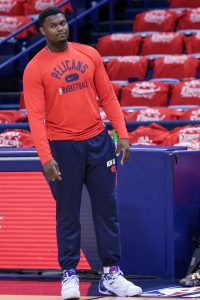 [RELATED:
[RELATED: 